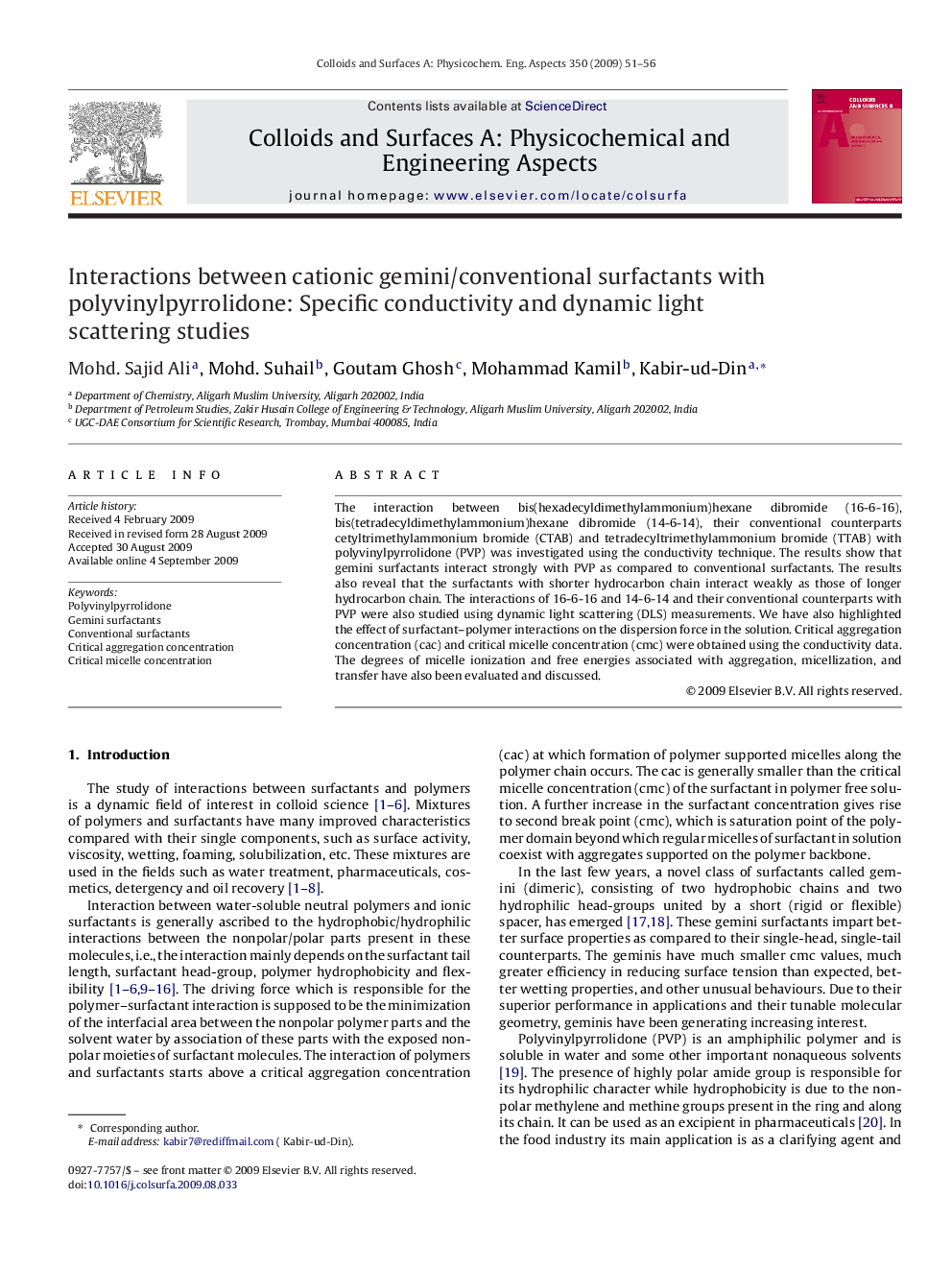| Article ID | Journal | Published Year | Pages | File Type |
|---|---|---|---|---|
| 595462 | Colloids and Surfaces A: Physicochemical and Engineering Aspects | 2009 | 6 Pages |
The interaction between bis(hexadecyldimethylammonium)hexane dibromide (16-6-16), bis(tetradecyldimethylammonium)hexane dibromide (14-6-14), their conventional counterparts cetyltrimethylammonium bromide (CTAB) and tetradecyltrimethylammonium bromide (TTAB) with polyvinylpyrrolidone (PVP) was investigated using the conductivity technique. The results show that gemini surfactants interact strongly with PVP as compared to conventional surfactants. The results also reveal that the surfactants with shorter hydrocarbon chain interact weakly as those of longer hydrocarbon chain. The interactions of 16-6-16 and 14-6-14 and their conventional counterparts with PVP were also studied using dynamic light scattering (DLS) measurements. We have also highlighted the effect of surfactant–polymer interactions on the dispersion force in the solution. Critical aggregation concentration (cac) and critical micelle concentration (cmc) were obtained using the conductivity data. The degrees of micelle ionization and free energies associated with aggregation, micellization, and transfer have also been evaluated and discussed.
